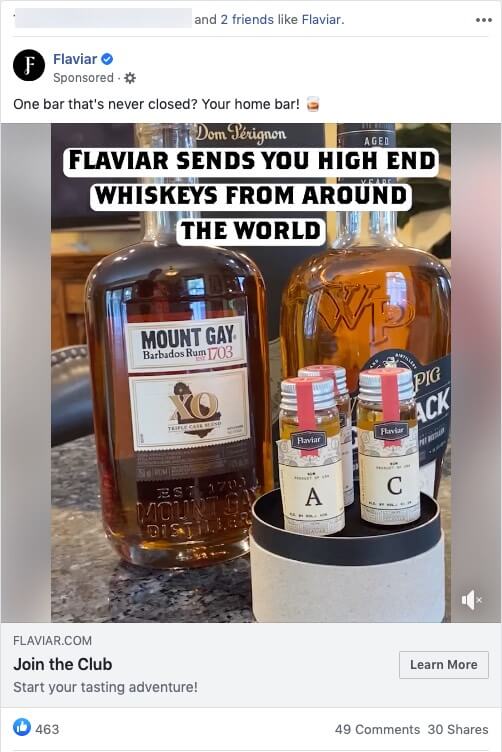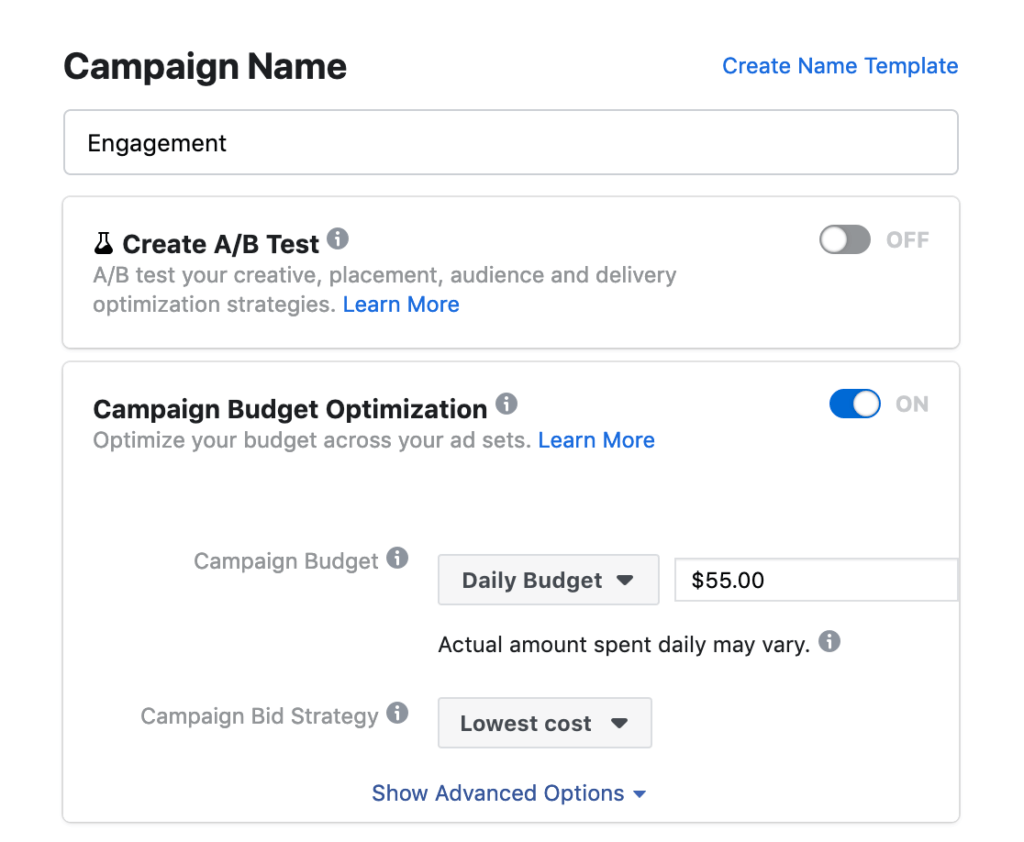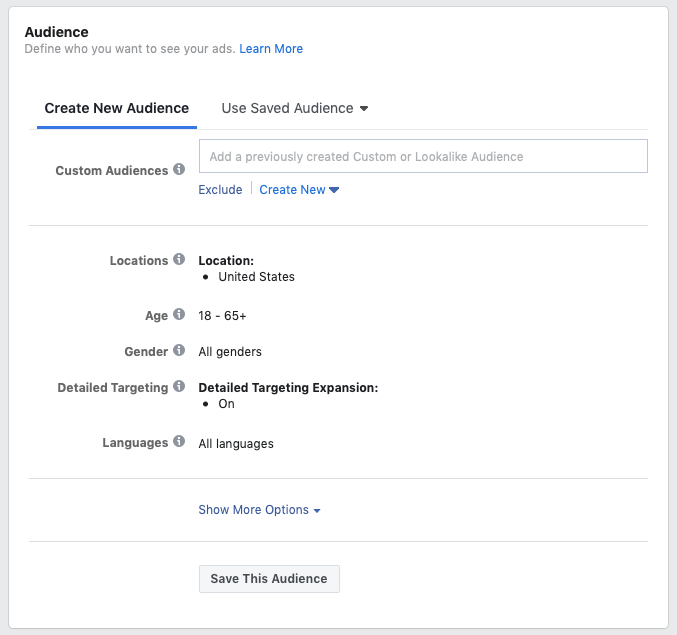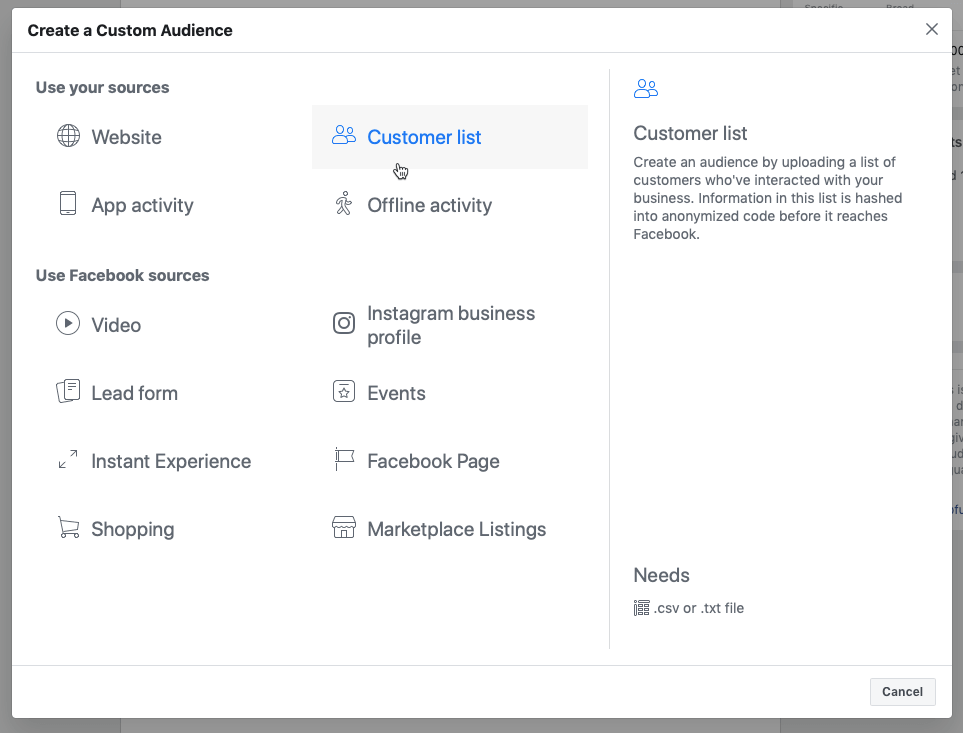Reaching Your Ideal Customers with Facebook Ads
Facebook Ads are a powerful way to reach your ideal customers when they’re scrolling through the world’s most popular social media network. At least that’s what you’ve heard.
If you haven’t run Facebook Ads before, or if you’ve dabbled in them with little success, this article is for you. We’re going to show you how to set up your ads using Facebook Ad Manager, create targeted audiences, bid appropriately, run split tests, measure your results, and more!
If all you’ve been doing is “boosting” your posts, stop! That’s like trying to paint miniatures with a roller brush! After reading this article you’ll understand how to target your ideal customers with creative ads that get them to “slow the scroll” and engage with you.
But first you have to understand what Facebook Ads aren’t meant to do.
Facebook Ads Aren’t for the Cold, Hard Sell
It’s important to remember that Facebook isn’t an ad platform like Google or Bing. Why? Because when people are on Facebook, they aren't generally searching for products to buy or trying to solve a problem.
Social platforms like Facebook are for just that–socialization. People want to be distracted, educated, and entertained, not pitched. In other words, Facebook is not the place for a hard sell, especially for a cold audience. (A “cold audience” describes people not familiar with you or your brand, as opposed to a “warm audience” that may be on your email list or have visited your site.)
That doesn't mean you can't sell in Facebook Ads! Just that you should look to create engaging ads that feel like “native” posts and get people to stop their scroll. Posts that educate, inform, and entertain.

This ad features a video that's informative and sucks in a whiskey drinker like myself who's interested in expanding their palate.
Reel Em’ In
What Facebook Ads can do is help warm a cold audience using a sales funnel that consists of multiple stages and touchpoints that emphasize your unique value.
Instead of directly selling them a product, you want to grab their attention by identifying a “pain point” your ideal customer has that you can solve. This can be done with a promotion, deal, or a unique experience.

Here, Sunday has identified bare patches in a lawn as the bane of home owners everywhere. They educate, inform, and ultimately want you to visit their site where you can purchase their organic solution. (I bought some; I'll let you know how it turns out!)
You can either require your target audience to provide you with their email address (one of the most valuable forms of marketing currency), or they can be driven to your website. Once they are led to your site, you can pixel them (more on that later) and move that “cold” audience into a “warm” audience category; this allows you to show them different ads geared towards those who have already shown interest in your product/service.
Defining a Lead and Knowing its Value
The first thing you want to determine is, what qualifies as a lead for you and your business? An email signup? An app download? A requested quote?
Once you’ve defined your lead, you can assign it a value and determine how much you’re willing to pay for it. If it takes ten leads to close a sale that produces $100 in net profit, then each lead is worth $10. You can afford to pay more than $9.99 for that lead, and of course, you should aim to pay less. The costs associated with getting a new customer is often referred to as the Cost Per Acquisition (CPA.)
What can complicate matters is your Customer Lifetime Value (CLV.) If that sale typically leads to a client that nets you $100 every year for 10 years, then the CLV for that customer is $1,000. Now, you can afford to pay more for that lead!
Most business owners don't have a complete grasp of their CPA or their CLV, so don't feel bad if you don't know your numbers, especially if you're just starting out. If this is the case, start with your best guesstimate and continue to revise and hone your numbers over time.
Next, you’ll want to decide on what will turn a prospect into a lead: is it a blog post, an eBook, an event, a giveaway…the list of possibilities goes on.
But knowing what you’re willing to pay to capture that lead, as well as what the “bait” will be, is critical to determine before starting your Facebook Ad campaign. In fact, when creating a new campaign in Facebook Ad Manager, you'll be asked:

Knowing your objective will help Ad Manager provide you with better options as you build out your campaign. On top of that, it will get the Artificial Intelligence (AI) behind Facebook Ads geared up to show your ads to the right type of people, giving you better ROI at the end of the day.
Setting a Budget for Your Facebook Ad Campaign
Setting a budget is one of the trickiest parts of any marketing strategy. Ad platforms like Google and Facebook are notorious for draining your budget if not used effectively. However, if you’ve defined a lead and know what you’re willing to pay to capture it, setting a budget becomes much easier.

Most of the time, marketers unfamiliar with Facebook Ads will say “let’s throw $100 at this on Facebook and see what happens.”
Instead of this “spaghetti on the wall” approach, consider the revenue goal for your campaign:
- How many sales will it take to meet our revenue goal?
- How many leads typically turn into sales?
With that information you can determine your cost per lead, and that will be critical when creating your budget.
If you are mathematically challenged, here’s an ROI Calculator to help determine your Ad Budget.
How to Target Your Audience with Facebook Ads
The next important question is, who are you trying to reach with your ad?
- How old are they?
- Where do they live?
- What’s their economic status?
- Do they eat out or cook at home? Rent or own? Prefer video games or board games? Etc.
In Facebook Ad Manager, you're able to create a new audience or use one you've already saved. Below you can see some of the options you have in creating a new audience.

Because of the vast amount of information we dump into Facebook–relationship status, location, job description, articles, likes and dislikes–they’re able to generate predictions about our income, preferences, buying behavior, and more.
This is why Facebook Ads are the best way to reach a unique, niche, or targeted audience: you’re able to zero in on a zip code, demographic, or even retarget past customers (more on that later).
According to Hubspot, “If you work in content marketing, you’ve likely already heard the buzz about ‘unicorn marketing.’” But just in case you’ve missed the excitement about this concept coined by MobileMonkey CEO and Inc. columnist Larry Kim, here’s a quick primer.
You may already have heard of the 80/20 rule, which says that 20% of your effort will drive 80% of your results. Kim argues that for content marketing, it’s more like a 98/2 rule.
Only 2% of your content will perform well on both social and in search engine rankings, while also achieving high conversion rates. He argues that content marketing is a volume game, and you simply have to create lots of “donkey” content (you can guess what that means) to get to the unicorns.
So what’s your unicorn content? It’s that blog post that absolutely blows up on your social channels, climbs to the top of the Google rankings, and drives a ton of traffic to your landing pages.
How to Use Audience Targeting
In an Agents of Change interview, Facebook Ads expert Amanda Robinson, The Digital Gal, gives a great example of the customer journey as the focus:
She says, “your audience is the real key. And building these audiences over time and fostering these audiences, bringing them through your journey, continuing to serve high quality content to the people who are engaging with you and rewarding people for that engagement, that’s the real magic of Facebook advertising.
“So it’s not just flipping the switch on and start advertising and get high quality audiences. It’s something that you actually need to grow over time. So when you first start advertising, the expectation needs to be set that your first few thousand dollars you’re spending through Facebook ads is to grow higher quality audiences by getting your content in front of them.”
Simply by adjusting your audience targeting and some of your ad’s copy, you can create an entirely new ad that targets a completely different group of people without reinventing the wheel. Using simple pieces of information like someone’s relationship status and location, you’re able to reach users that are more likely to convert from your ad.
If you want to check out our full interview with Amanda, you can do so here.
Facebook Ads Custom Audiences
While choosing audiences based on demographics and interests are incredibly effective at reaching large groups of relevant people, what if you want to target specific individuals with your ads?
Great news! For those who have a CRM or email list and have actively collected user emails, you’re able to create a custom audience from that list. This means you can create a custom audience that consists of leads, previous buyers, and more. If you’ve obtained an email from someone, you’re able to target that person with a Facebook ad (assuming they used the same email to sign up for Facebook, something more common for B2C than B2B.)

You’ll also want a Facebook pixel added to your website or landing page. A pixel is a bit of code placed on your page or website that notices when a Facebook user visits your page and whether or not they take an action, like signing up for your email newsletter or buying something. When the pixel is “triggered” it reports this action back to Facebook. You can reach this customer again by placing them in a custom audience based on the action they took…or didn’t take.
How to Use a Custom Audience in Facebook Ads
An effective way to use a custom audience is to target users who have recently visited your website, but maybe didn’t make a buying decision. Because they’ve already interacted with your brand, they are most likely further along in the buying cycle.
A custom audience list can also be created for your recent customers to receive one offer, while a “we miss you” offer could be delivered to a custom audience of past customers who have been inactive for a certain amount of time.
But Amanda Robinson warns, “If you’re retargeting video viewers–anyone who’s ever watched a video on your Facebook page–if you’re retargeting those folks, that’s one of the audiences that doesn’t automatically update every time you add a new video, you need to go back in and update that audience and keep adding to it.”
She continues on to say “So there’s a little bit of work that needs to happen in there, and I think a lot of advertisers just have the go-set-it-and-forget-it blinders on without paying attention to what’s actually happening under the hood with the audiences that you’re targeting and setting up.”
Lookalike Audiences on Facebook
Facebook can take your custom audience list and create Lookalike Audiences that feature people with similar interests, demographics, or behaviors. So, if you have a custom list of past customers, you’re able to generate a Lookalike Audience of people similar to those already interested in your products.

However, you should still add filters to your Lookalike Audiences. Let’s say you’re a local business in Portland, Maine, and you upload your list to Facebook to create that Lookalike Audience. Facebook may match up the demographics and psychographics to people from Seattle, Washington, who will never need your locksmithing skills. Putting a geographic filter on this audience will make it more valuable to your business.
Liz Bell, Director of Marketing at flyte adds, “As your pixel data grows, so does Facebook’s algorithm. Soon you’ll be matching more data points to find other people who have taken action or caused a specific pixel action to fire. You are now able to target people who share a variety of attributes with others who have taken action, such as, visiting your website, adding to their cart etc.
“There are tons of customer audience combinations (video percentage, fan page likes, people who purchase, and friends of fans and more). Conversion campaigns can really show their power with this pixel data.”
For more information on Audience Targeting, check out: Four Steps to Fix a Failed Facebook Ad Campaign.
Split Testing Your Ads for Better ROI
A great way to figure out what aspects of your ads are most effective is to use split testing. This allows you to set up multiple ads that can be mixed and matched with different headlines, images, and copy, to test which are most successful.
“Split Testing means profit,” according to Liz Bell. “The more data points you have, the less you will spend and the more accurate Facebook will be able to target people who are most likely to purchase.”
Lisa Dougherty, Marketing Leader at Content Marketing Institute shares, “the Facebook algorithm changes like the wind, but the forces that move readers to take action remain constant. Really know your audience, so you can write copy that speaks to their desires, needs, and interests. Don’t get greedy – remember it’s not about reaching the most people, it’s about reaching (and moving) the right people.
“Avoid stock photos. Opt instead for real-life pictures and custom visuals for a more authentic connection. And, finally, include a unique, clear, and compelling value proposition – one simple sentence that explains how your readers will benefit from your offer.”
The Waiting is the Hardest Part
It’s easy to get antsy waiting for your ads to collect data, and it can be tempting to tweak them here and there immediately after posting. However, one important rule of thumb when creating a new Facebook ad is to let it run for at least 24 hours to collect some valuable data before making changes. It’s preferable to wait at least 3 days to collect performing data…so be patient!
Understanding Facebook Ads Relevance Diagnostics
Once an ad is running for a few days you’re ready to check your Ad Relevance Diagnostics, which replaced Facebook's Ad Relevancy Score in 2019. This is Facebook’s grading system based on three factors:
- Quality Ranking: How your ad's perceived quality compared to ads competing for the same audience.
- Engagement Rate Ranking: How your ad's expected engagement rate compared to ads competing for the same audience.
- Conversion Rate Ranking: How your ad's expected conversion rate compared to ads with the same optimization goal competing for the same audience.
Note the words “perceived” and “expected.”
The more relevant your ad is, the lower your cost per engagement will be (the total amount spent divided by post engagement). You can find these rankings in the Ads section of Facebook Ad Manager, as the rankings are on an ad-level basis.

Tracking Your Results
For the best Facebook Ads success, you’ll want to put some tracking pieces in place. An outside tracking platform allows you to see all of your website’s traffic, and tell you where those users came from (organic, direct, social, or referral). While Facebook Insights provide some of this, their data isn’t always the most accurate and shouldn’t be relied on fully.
Here are a few different resources that can be used for Facebook tracking, and how to use them:
What If They Click But Don’t Convert?
What happens if someone clicks your ad, but doesn’t complete your desired conversion? You can retarget that person with a follow-up ad to reel them back in…you can even retarget people who just saw your ad, but didn’t click it. You can also create a custom audience of converters or a lookalike audience based on those who converted, and target those audiences.
What About Instagram Ads?
Yes, you can place Instagram ads through Facebook Ads Manager! Because Facebook owns Instagram, the process is refreshingly drama-free. While it can be simpler to promote an existing post directly in Instagram itself, Facebook Ads Manager offers the most customization options when creating your ad.
For those who need a little assistance creating their ads there is a Guided Creation workflow option, and a Quick Creation option for more advanced users. Facebook for Business’s Help Center gives a step-by-step guide on creating Instagram ads through Facebook Manager.
Next Steps
Chances are, you’re eager to dive in, now that you better understand how Facebook Ad Manager works, and how it can help you target, bid, test, and create more effective ads!
But we don’t want to send you off on your travels without a helpful guide! That’s why we created our free Facebook Ads Planning Guide to get you started!
Enter your details to download our Facebook Ad Planning Guide
But if you’re too busy running your company and want some experienced help to provide some tailored strategy, get your ads all set up, or run them for you, just reach out to us today!


